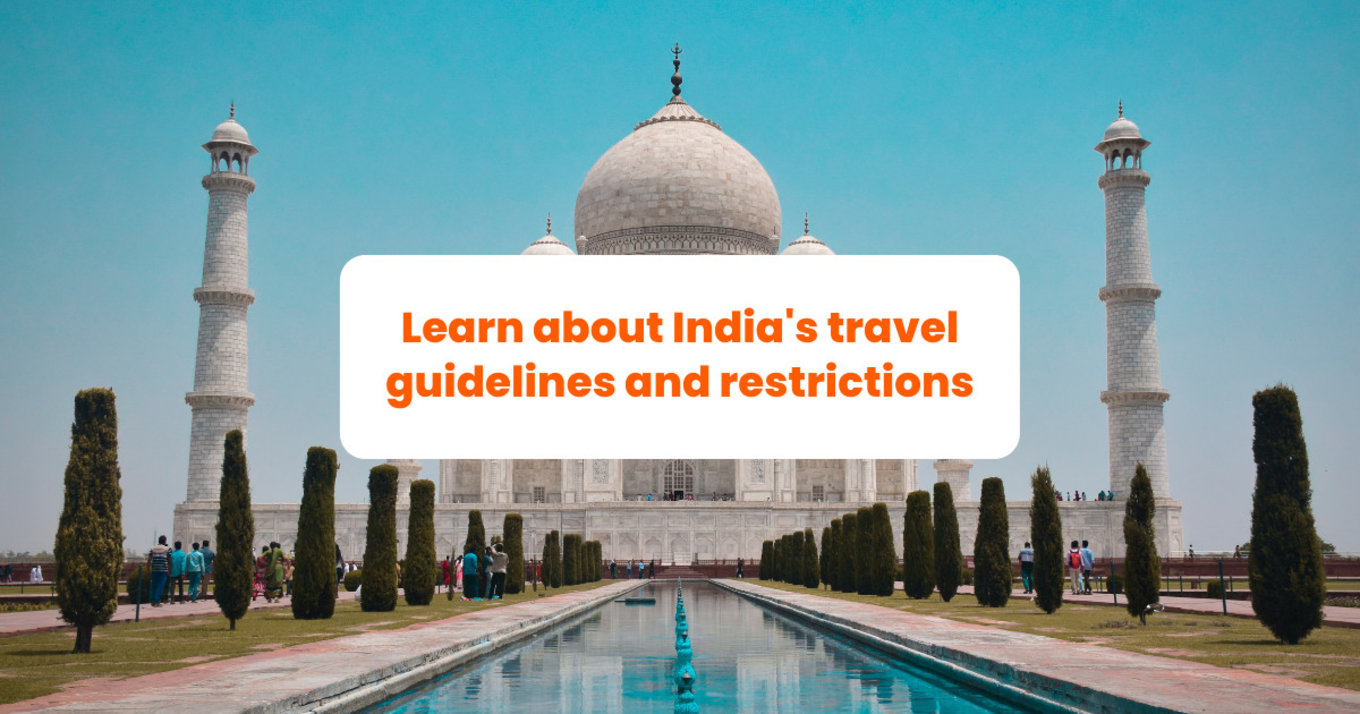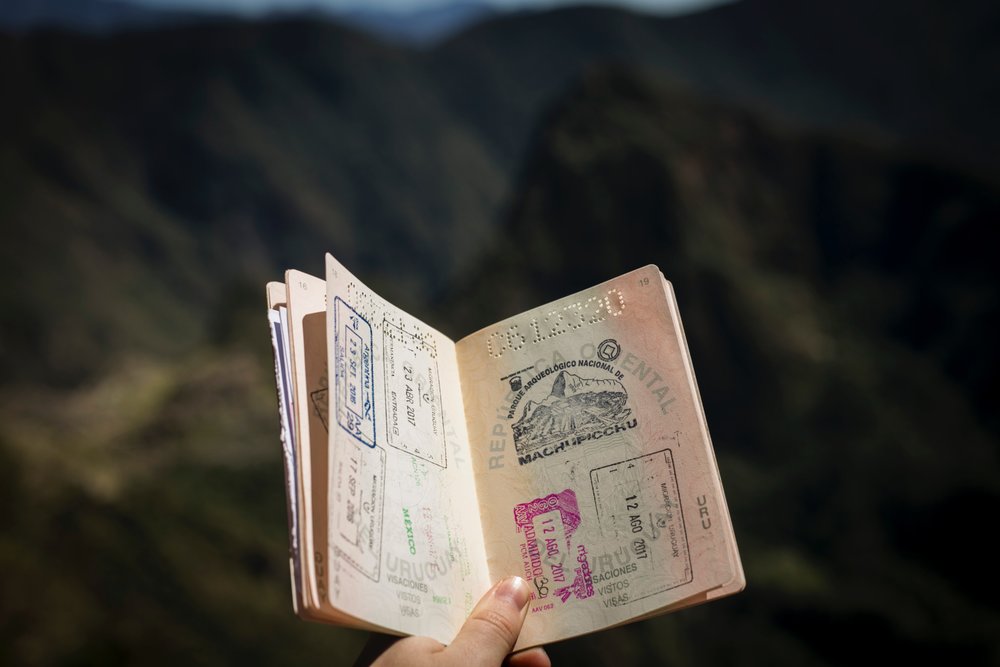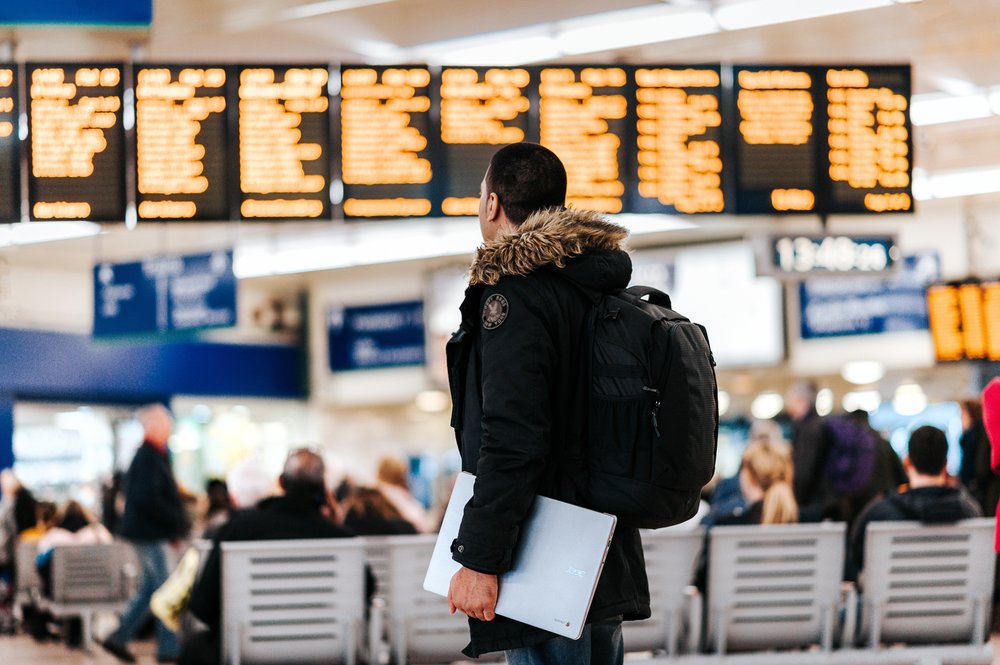IMPORTANT NOTE: Flight personnel will no longer be required to wear PPE outfits but wearing face masks and using sanitizers will still be mandatory. Pat-down searches by security personnel has also resumed.
India travel requirements you need to know about
India is one of the most fascinating countries you’ll ever visit in Asia. It’s famous for the hustle and bustle of its cities, the liveliness of its people, its vibrant culture and enthralling traditions, exotic food, and its historical sites. It has so many things for tourists to visit and try that it can get overwhelming. You can’t truly anticipate what it has to offer because it’ll surprise you with things that will far exceed your expectations!
Did you know that back on 15 Nov 2021, India opened its gates to foreign travelers? Tourists from all countries are allowed to enter the country now, and the restrictions vary depending on your vaccination status. While you can’t prepare for what India has in store for you, you can definitely prepare for your flight so your trip will go without a hitch! To simplify things for you, here are two of the basic requirements:
1. Procure a tourist e-visa
One of the things that you need to enter India is to have an e-visa. You can register for one via India’s e-visa online portal. There, you can also see if your passport/country of origin is eligible for the e-visa, too.
Klook Tip: we recommend registering for an e-visa over getting a regular visa because the application is easy and fast, plus, you’ll get your e-visa within 3 business days!
To register, all you need to do is to fill out a form and indicate:
- Your date of arrival
- Whether you’re arriving by air or sea
- Your port of arrival (select from dropdown options)
- Your passport details (your full name, date of birth, nationality, passport number, type of visa)
- Contact details (full name, address, email address, and contact number)
Next, you just need to review your information and confirm your payment. After that, just wait to receive your approved visa.
2. Fill out a self-declaration form
All travelers aged 5+ must fill out a self-declaration form via the Air Suvidha Portal. This form is mandatory and not only must be accomplished online but it also must be presented on arrival. This form will ask you to indicate:
- Your full name
- Date of birth
- Your India Arrival Flight Number
- Your plane seat number (if applicable)
- PNR (Passenger Name Record) number
- Your nationality
- An uploaded image of your passport ID page
- Date of arrival
- Country of departure
- An uploaded image of your vaccination certificate
- An uploaded image of your negative RT-PCR test result taken not more than 72 hours before your arrival (NOTE: fully-vaccinated UAE citizens no longer have to take an RT-PCR test before flying to India)
- City of departure
- First airport of entry in India
- First airport of entry state/union territory
- Information on your final destination in India
- Your contact number(s)
- Your email address
- Symptoms checklist
- Details of countries you’ve visited in the last 14 days
- That you agree to undergo quarantine and take any tests that the local government mandates
Now, you might be wondering, “Who can travel to India? Am I eligible?”
Well, you’ll be glad to know that when we mentioned earlier that India has reopened to tourists from all countries, we meant everyone! Even if you’re not fully vaccinated or not vaccinated at all! Here’s a couple of things to take note of:
From 14 Feb 2022, tourists who are fully vaccinated with WHO-approved vaccines are not required to present a negative test upon arrival (since you’ll be uploading this via the Air Suvidha Portal). As of 14 Mar 2022, this covers 94 countries.
If you’re fully vaccinated, you don’t have to quarantine. Instead, you’ll be asked to self-monitor for 14 days.
If you’re unvaccinated or partially vaccinated, you have to undergo quarantine by self-isolating for 7 days. On Day 8, you’ll need to take a test, and then self-monitor yourself for 7 more days.
Before your adventure starts…
Make sure that you’ve successfully accomplished your Air Suvidha Portal form and that you’ve uploaded your negative RT-PCR test results or your vaccination certificate so you’ll be allowed to board your flight.
You’ll also have to undergo thermal screening. It’s a last-minute measure to check for any COVID-19 infection. If by any chance the screening determines that you’re asymptomatic, don’t sweat it! You’ll still be allowed to fly.
Oh, speaking of asymptomatic, whether it’s detected that you're (a)symptomatic or not, you’ll need to download the Aarogya Setu app from Google Play or the App Store on your mobile device. It’s the Indian government’s contact tracing and self-assessment application that will help them determine COVID hotspots and how to curb the spread of the virus.
While flying high in the sky…
Your trusty in-flight crew will take care of you and address your needs! They will also provide reminders about the rules during flight. Just make sure to follow their guidelines and it’ll be smooth sailing all throughout the ride.
If by any chance (hopefully not at all!) you or someone starts exhibiting COVID-19 symptoms, the crew will immediately isolate the person to prevent any possible spread mid-flight.
Sticking the Landing
When you arrive at the airport, you’ll need to go through a few more procedures.
First, make sure to observe social distancing when alighting from the plane. Once you’re finally off, you’ll go through one more thermal screening, plus, you’ll present your self-declaration form to the airport’s health staff.
If you’re lucky, you might get picked for a random post-arrival testing at the airport once you arrive! Don’t fret. They’re just going to check if you’re exhibiting symptoms or if you’re actually carrying it.
“But what if I’m detected to be (a)symptomatic?” Don’t worry! You’ll be in good hands! Highly-trained medical professionals will take you to a medical facility for isolation and testing. You’ll even be treated!
The same goes if you have little tykes with you. While they don’t have to take pre- and post-arrival COVID-19 tests, if they test positive during the 14-day self-monitoring period, they will be isolated and treated.
When you’re cleared by the airport, you’re finally free to go to your accommodation. You’ll have to self-monitor for the next 14 days. If you develop any symptoms during the 14-day self-monitoring period, make sure to self-isolate, report to the nearest health facility, or call the national helpline number (10750 or the state helpline number.
Things to do in India
Wherever you are in the country, there are plenty of things to try ranging from attractions to visit, experiences to partake in, and tours that will inform you about the local cultures. What are you waiting for? Check out all the exciting things to do in India, like discovering Delhi’s most popular street food, visiting the world-famous Taj Mahal, and touring the streets of Mumbai to see its historical and cultural highlights!
Expect the unexpected in India and simply allow it to lead you by the nose to joyful experiences you weren’t exactly planning on having.





















